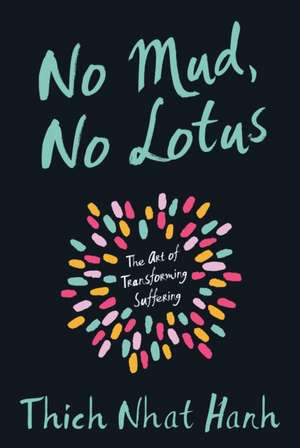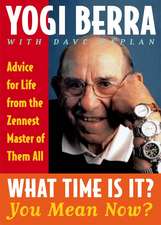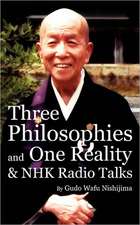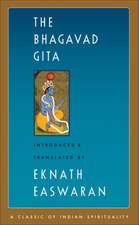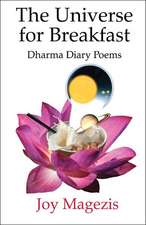No Mud, No Lotus: The Art of Transforming Suffering
Autor Thich Nhat Hanhen Limba Engleză Paperback – 19 feb 2015
The secret to happiness is to acknowledge and transform suffering, not to run away from it. In No Mud, No Lotus, Thich Nhat Hanh offers practices and inspiration for transforming suffering and finding true joy. Thich Nhat Hanh acknowledges that because suffering can feel so bad, we try to run away from it or cover it up by consuming. We find something to eat or turn on the television. But unless we’re able to face our suffering, we can’t be present and available to life, and happiness will continue to elude us. Nhat Hanh shares how the practices of stopping, mindful breathing, and deep concentration can generate the energy of mindfulness within our daily lives. With that energy, we can embrace pain and calm it down, instantly bringing a measure of freedom and a clearer mind. No Mud, No Lotus introduces ways to be in touch with suffering without being overwhelmed by it. With his signature clarity and sense of joy, Thich Nhat Hanh helps us recognize the wonders inside us and around us that we tend to take for granted and teaches us the art of happiness.
Preț: 72.11 lei
Nou
Puncte Express: 108
Preț estimativ în valută:
13.80€ • 14.41$ • 11.42£
13.80€ • 14.41$ • 11.42£
Carte în stoc
Livrare din stoc 24 februarie
Preluare comenzi: 021 569.72.76
Specificații
ISBN-13: 9781937006853
ISBN-10: 1937006859
Pagini: 128
Dimensiuni: 137 x 204 x 10 mm
Greutate: 0.18 kg
Editura: Parallax Press
Locul publicării:Canada
ISBN-10: 1937006859
Pagini: 128
Dimensiuni: 137 x 204 x 10 mm
Greutate: 0.18 kg
Editura: Parallax Press
Locul publicării:Canada
Cuprins
Table of Contents
1. A Lotus in Muddy Waters: Understanding Why We Suffer
Practice: Looking at a Match
Story 1
2. Saying Hello
Practice: Stopping
Story 2
3. The Roots of Suffering
Practice: Looking Deeply
Story 3
4. The Birth of Compassion
Practice: Metta
Story 4
5. Finding Joy
Practice: Walking Meditation
Story 5
6. Creating Community
Practice: Interbeing
Story 6
1. A Lotus in Muddy Waters: Understanding Why We Suffer
Practice: Looking at a Match
Story 1
2. Saying Hello
Practice: Stopping
Story 2
3. The Roots of Suffering
Practice: Looking Deeply
Story 3
4. The Birth of Compassion
Practice: Metta
Story 4
5. Finding Joy
Practice: Walking Meditation
Story 5
6. Creating Community
Practice: Interbeing
Story 6
Notă biografică
Thich Nhat Hanh is one of the best-known Zen Buddhist teachers in the world today. His best-selling books include Happiness and Peace Is Every Step. He lives in Plum Village, in southwest France, where he gardens, writes, and teaches the art of mindful living.
Extras
Healing Begins with Conscious Breathing
The process of healing begins when we breathe in. There is no way to healing; healing is the way. When we breathe in mindfully, we bring our mind home to our body and there is a reunification of body and mind. That can happen in just a few seconds.
When we bring our mind home to our body, we stop our thinking. There is always a mental discourse going on in our mind, which can carry us away from the here and the now. Thinking can be productive, but most of our thinking is not productive. You may be lost in your thinking. Also your regret and sorrow about the past can stop, as well as your fear, worries, and uncertainty about the future. So just breathing in mindfully brings you a lot of freedom. In just a few seconds you get freedom from the past, from the future, from your thinking and your projects.
If you continue to breathe in and out in awareness, you can maintain that state of freedom. If you have to make a decision, it's much better to make a decision when you are free, rather than to make a decision under the influence of your fear, anger, regret, and worries. Freedom is possible. And freedom is obtained when you begin to breathe in mindfully.
It's difficult for healing to take place when we’re under pressure, tension, and stress in our body and mind. There’s always a kind of energy pushing us to run. Many of us believe that happiness is not possible here and now. Most of us believe that happiness is possible in the future, so we try to run into the future and get some conditions of happiness that we don’t have in the here and the now. According to the teaching and practice offered by the Buddha, we already have enough or more than enough conditions to be happy in the here and the now. If you breathe in and bring your mind home to your body, you'll be established in the present moment and you'll recognize the many conditions of happiness that you already have.
Releasing Tension in the Body
The first domain of mindfulness is the breath and the body. Being aware of our in-breath and out-breath is a very simple exercise, but the effect is very great. It can stop our thinking, worries, and fears, and it brings us a lot of freedom. When we focus our attention on our in-breath and out-breath, not only can we enjoy our breathing, but we are established in the here and the now, we can be in touch with many wonders of life within and around us, and the process of healing can start. Next we become aware of the whole body and release the tension in the body. While taking care of the body we produce freedom and joy, because body is linked to mind.
Not Running Away from Pain
Most of us don’t want to be with our pain. We’re afraid of being overwhelmed by it, so we stry to run away from our pain. There’s loneliness, fear, anger, and despair in us so we don't feel it’s pleasant to go home to ourselves and encounter these energies. Most of us try to cover up by consuming. We look for something to eat or we turn on the television. Even if the program isn’t interesting we don’t have the courage to turn it off because we don’t want to go back and encounter the pain inside. The marketplace provides us with many items to help us to cover the suffering inside.
According to this teaching and practice, we should try to go home and take care of the pain. There is a way to go home without fear of being overwhelmed by the pain and that is by generating the energy of mindfulness. With the energy of mindfulness you go home to the pain and embrace it, the way a mother holds her baby when it suffers. So the mother represents the energy of mindfulness, and the baby our painful feeling. If we are a beginner in the practice, we may borrow that energy from our brothers and sisters in the practice. "Dear Sangha, here is my pain, here is my sorrow. Please help embrace it for me." Everyone will be breathing in and out and supporting you in recognizing and embracing the pain inside. That’s why practicing with a Sangha is much easier. The sangha can generate a powerful collective energy of mindfulness that can help you to recognize and embrace your pain. Later on you can do it for yourself when you have got some relief.
Practicing mindful walking, mindful breathing, you generate the energy of mindfulness. With that energy you recognize the painful feeling in you and you embrace it tenderly. You lullaby and calm the painful feeling.
Handling Strong Emotions
Most young people haven’t learned how to handle a strong emotion, like anger, fear, or despair. So they believe that the only way to end the suffering is to kill themselves or kill someone else. We as parents or teachers can master the practice of handling strong emotions so we can transmit it to the young people.
When a strong emotion comes, we should stop whatever we’re doing and take care of it. The practice is simple. Lie down, you put your hand on your belly, and begin to breathe. You may also do this while sitting in an upright position. Stop the thinking. Don’t allow your awareness to be on the level of the mind. Bring your mind down to the level of your abdomen. When you look at a tree in a storm, if you focus your attention on the top of the tree, it seems the tree is so vulnerable and fragile and could be broken at any time. But when you direct your attention down to the trunk of the tree, you see that the tree is deeply rooted in the soil and can withstand the storm. Your belly is the trunk of the tree and your mind is the top of the tree. In the time of a strong emotion we have to bring our mind down to our trunk, our abdomen, and focus all our attention on the rise and fall of the abdomen. Breathing in, notice the rising of your abdomen. Breathing out, notice the falling of your abdomen. Breathe deeply, and focus your attention only on your in-breath and out-breath. If you’re aware of anything, it's that an emotion is just an emotion and that you’re much much more than one emotion. You are body, feelings, perceptions, mental formations, and consciousness. The territory of your being is large. One emotion is nothing. An emotion comes, stays for a while, and then it goes away. Tell the young person: "Why should you die just because of one emotion? You can learn now how to handle a strong emotion. Then later on when a strong emotion comes again, you'll be able to handle it.”
We shouldn’t wait until the strong emotion comes to begin learning. It may be too late. The emotion will carry you away. So we have to begin the practice today, the practice of deep breathing, stopping our thinking, and just focusing our attention on the rising and falling of our abdomen. As we continue the breathing, the emotion will not be able to push us to do something destructive. When you survive the emotion, you will have confidence that you can handle it the next time. Even if your child is only five or seven, he or she can have a strong emotion. Take his hand and say, "Darling, let's breathe together. Breathing in, you know your belly is rising," and you create something like a guided meditation and the child will follow you. You can channel to the child your energy of mindfulness. Teachers can also do this in school.
We are much more than one emotion. Emotion is something impermanent. It comes and goes. If during the time of the emotion, you have that insight, it will save you. If you can remind the young person of that insight, you save his or her life.
The Art of Suffering
When we practice mindful deep breathing like that for a few weeks, it will become a habit. And when a painful feeling or emotion arises, we’ll remember to practice, and we will very easily handle a strong emotion or a painful feeling. This is the art of suffering. There are exercises to create happiness; that is the art of happiness. And there are exercises for handling suffering; that is the art of suffering. When you know how to suffer, you suffer much much less. And you can make good use of your suffering in order to create understanding and compassion.
Does the Buddha Suffer?
When I was a young monk, I believed that after enlightenment the Buddha didn’t suffer anymore. So I naively wondered, "What’s the use of becoming a Buddha if you continue to suffer?" The Buddha did suffer, because he had a body, feelings, perceptions, just like all of us. Sometimes he had a headache or suffered from rheumatism. If he happened to eat something that wasn’t well cooked, he might have idigestive problems. So he suffered physically. And when he saw the suffering of his disciples or when one of his beloved disciples died, of course he suffered. How can you not suffer when a dear disciple has just died? The Buddha was not a stone. He was a human being. But because the Buddha had a lot of insight, wisdom, and compassion, he suffered much less. He knew how to suffer. We have learned that if we know how to suffer, we will suffer much less. This is a very important lesson.
The second question I had was, "Why did the Buddha continue practicing sitting meditation and walking meditation after enlightenment? He was already a Buddha, so why did he need to practice?" When I grew up I discovered the answer. Happiness is impermanent, like everything else. And in order for happiness to last you have to learn how to feed your happiness. Because nothing can survive without food, so your happiness can die if you don't know how to nourish it.
Suffering and Happiness Inter-are
There is a deep connection between suffering and happiness. Happiness and suffering inter-are. They’re like the left and the right of this sheet of paper. The left is not the right, but without the right, the left cannot be. You cannot remove the left from the right. They inter-are. They cannot be by themselves alone. They have to inter-be with each other. That is the teaching of interbeing. You cannot be by yourself alone, you have to inter-be with everything else.
This flower is teaching us interbeing. She is giving a Dharma talk. If you look deeply into a flower you see that a flower is made only of non-flower elements. In this flower there is a cloud. A cloud is not a flower. But without a cloud, a flower cannot be. There is no rain and no flower can grow. You don't have to be a poet in order to see a cloud floating in a flower. It's really there. And there is sunshine. Sunshine is not flower, but without sunshine no flower is possible. Anmd if we continue to look, we see many other things like the earth and the minerals. Without them a flower cannot be.
So it is true that a flower is made only of non-flower elements. A flower cannot be by herself alone. A flower can only inter-be with non-flower elements. You cannot remove the sunshine, the soil, and the cloud from the flower.
The same thing is true with suffering and happiness. When you grow lotus flowers you know that lotus flowers need to grow in mud. You can’t grow lotus on marble. When you look into the lotus flower you see the mud inside. Smile to the mud in the lotus.
We know that happiness is made of non-happiness elements. Happiness is a kind of flower. She is made of non-happiness elements. It's like a lotus is made of non-lotus elements, including the mud.
The Goodness of Suffering
When we get in touch with suffering, understanding will arise. Understanding suffering will bring about compassion. It’s understanding and compassion that can heal you, that can make a person happy, that can make a person a real human being. A human being without understanding and compassion cannot be a happy person. Without compassion and understanding you are utterly alone, cut off. You can’t relate to other human beings. Understanding and compassion are possible only when you come in touch with suffering. Without the mud, there is no lotus flower. Without suffering, there can be no understanding and compassion. You can make good use of suffering to generate these two energies. Understanding means first of all to understand suffering—the suffering inside and then the suffering of others. It with the mud of suffering that we can create the lotus of understanding and compassion. No mud, no lotus. This is very clear.
The process of healing begins when we breathe in. There is no way to healing; healing is the way. When we breathe in mindfully, we bring our mind home to our body and there is a reunification of body and mind. That can happen in just a few seconds.
When we bring our mind home to our body, we stop our thinking. There is always a mental discourse going on in our mind, which can carry us away from the here and the now. Thinking can be productive, but most of our thinking is not productive. You may be lost in your thinking. Also your regret and sorrow about the past can stop, as well as your fear, worries, and uncertainty about the future. So just breathing in mindfully brings you a lot of freedom. In just a few seconds you get freedom from the past, from the future, from your thinking and your projects.
If you continue to breathe in and out in awareness, you can maintain that state of freedom. If you have to make a decision, it's much better to make a decision when you are free, rather than to make a decision under the influence of your fear, anger, regret, and worries. Freedom is possible. And freedom is obtained when you begin to breathe in mindfully.
It's difficult for healing to take place when we’re under pressure, tension, and stress in our body and mind. There’s always a kind of energy pushing us to run. Many of us believe that happiness is not possible here and now. Most of us believe that happiness is possible in the future, so we try to run into the future and get some conditions of happiness that we don’t have in the here and the now. According to the teaching and practice offered by the Buddha, we already have enough or more than enough conditions to be happy in the here and the now. If you breathe in and bring your mind home to your body, you'll be established in the present moment and you'll recognize the many conditions of happiness that you already have.
Releasing Tension in the Body
The first domain of mindfulness is the breath and the body. Being aware of our in-breath and out-breath is a very simple exercise, but the effect is very great. It can stop our thinking, worries, and fears, and it brings us a lot of freedom. When we focus our attention on our in-breath and out-breath, not only can we enjoy our breathing, but we are established in the here and the now, we can be in touch with many wonders of life within and around us, and the process of healing can start. Next we become aware of the whole body and release the tension in the body. While taking care of the body we produce freedom and joy, because body is linked to mind.
Not Running Away from Pain
Most of us don’t want to be with our pain. We’re afraid of being overwhelmed by it, so we stry to run away from our pain. There’s loneliness, fear, anger, and despair in us so we don't feel it’s pleasant to go home to ourselves and encounter these energies. Most of us try to cover up by consuming. We look for something to eat or we turn on the television. Even if the program isn’t interesting we don’t have the courage to turn it off because we don’t want to go back and encounter the pain inside. The marketplace provides us with many items to help us to cover the suffering inside.
According to this teaching and practice, we should try to go home and take care of the pain. There is a way to go home without fear of being overwhelmed by the pain and that is by generating the energy of mindfulness. With the energy of mindfulness you go home to the pain and embrace it, the way a mother holds her baby when it suffers. So the mother represents the energy of mindfulness, and the baby our painful feeling. If we are a beginner in the practice, we may borrow that energy from our brothers and sisters in the practice. "Dear Sangha, here is my pain, here is my sorrow. Please help embrace it for me." Everyone will be breathing in and out and supporting you in recognizing and embracing the pain inside. That’s why practicing with a Sangha is much easier. The sangha can generate a powerful collective energy of mindfulness that can help you to recognize and embrace your pain. Later on you can do it for yourself when you have got some relief.
Practicing mindful walking, mindful breathing, you generate the energy of mindfulness. With that energy you recognize the painful feeling in you and you embrace it tenderly. You lullaby and calm the painful feeling.
Handling Strong Emotions
Most young people haven’t learned how to handle a strong emotion, like anger, fear, or despair. So they believe that the only way to end the suffering is to kill themselves or kill someone else. We as parents or teachers can master the practice of handling strong emotions so we can transmit it to the young people.
When a strong emotion comes, we should stop whatever we’re doing and take care of it. The practice is simple. Lie down, you put your hand on your belly, and begin to breathe. You may also do this while sitting in an upright position. Stop the thinking. Don’t allow your awareness to be on the level of the mind. Bring your mind down to the level of your abdomen. When you look at a tree in a storm, if you focus your attention on the top of the tree, it seems the tree is so vulnerable and fragile and could be broken at any time. But when you direct your attention down to the trunk of the tree, you see that the tree is deeply rooted in the soil and can withstand the storm. Your belly is the trunk of the tree and your mind is the top of the tree. In the time of a strong emotion we have to bring our mind down to our trunk, our abdomen, and focus all our attention on the rise and fall of the abdomen. Breathing in, notice the rising of your abdomen. Breathing out, notice the falling of your abdomen. Breathe deeply, and focus your attention only on your in-breath and out-breath. If you’re aware of anything, it's that an emotion is just an emotion and that you’re much much more than one emotion. You are body, feelings, perceptions, mental formations, and consciousness. The territory of your being is large. One emotion is nothing. An emotion comes, stays for a while, and then it goes away. Tell the young person: "Why should you die just because of one emotion? You can learn now how to handle a strong emotion. Then later on when a strong emotion comes again, you'll be able to handle it.”
We shouldn’t wait until the strong emotion comes to begin learning. It may be too late. The emotion will carry you away. So we have to begin the practice today, the practice of deep breathing, stopping our thinking, and just focusing our attention on the rising and falling of our abdomen. As we continue the breathing, the emotion will not be able to push us to do something destructive. When you survive the emotion, you will have confidence that you can handle it the next time. Even if your child is only five or seven, he or she can have a strong emotion. Take his hand and say, "Darling, let's breathe together. Breathing in, you know your belly is rising," and you create something like a guided meditation and the child will follow you. You can channel to the child your energy of mindfulness. Teachers can also do this in school.
We are much more than one emotion. Emotion is something impermanent. It comes and goes. If during the time of the emotion, you have that insight, it will save you. If you can remind the young person of that insight, you save his or her life.
The Art of Suffering
When we practice mindful deep breathing like that for a few weeks, it will become a habit. And when a painful feeling or emotion arises, we’ll remember to practice, and we will very easily handle a strong emotion or a painful feeling. This is the art of suffering. There are exercises to create happiness; that is the art of happiness. And there are exercises for handling suffering; that is the art of suffering. When you know how to suffer, you suffer much much less. And you can make good use of your suffering in order to create understanding and compassion.
Does the Buddha Suffer?
When I was a young monk, I believed that after enlightenment the Buddha didn’t suffer anymore. So I naively wondered, "What’s the use of becoming a Buddha if you continue to suffer?" The Buddha did suffer, because he had a body, feelings, perceptions, just like all of us. Sometimes he had a headache or suffered from rheumatism. If he happened to eat something that wasn’t well cooked, he might have idigestive problems. So he suffered physically. And when he saw the suffering of his disciples or when one of his beloved disciples died, of course he suffered. How can you not suffer when a dear disciple has just died? The Buddha was not a stone. He was a human being. But because the Buddha had a lot of insight, wisdom, and compassion, he suffered much less. He knew how to suffer. We have learned that if we know how to suffer, we will suffer much less. This is a very important lesson.
The second question I had was, "Why did the Buddha continue practicing sitting meditation and walking meditation after enlightenment? He was already a Buddha, so why did he need to practice?" When I grew up I discovered the answer. Happiness is impermanent, like everything else. And in order for happiness to last you have to learn how to feed your happiness. Because nothing can survive without food, so your happiness can die if you don't know how to nourish it.
Suffering and Happiness Inter-are
There is a deep connection between suffering and happiness. Happiness and suffering inter-are. They’re like the left and the right of this sheet of paper. The left is not the right, but without the right, the left cannot be. You cannot remove the left from the right. They inter-are. They cannot be by themselves alone. They have to inter-be with each other. That is the teaching of interbeing. You cannot be by yourself alone, you have to inter-be with everything else.
This flower is teaching us interbeing. She is giving a Dharma talk. If you look deeply into a flower you see that a flower is made only of non-flower elements. In this flower there is a cloud. A cloud is not a flower. But without a cloud, a flower cannot be. There is no rain and no flower can grow. You don't have to be a poet in order to see a cloud floating in a flower. It's really there. And there is sunshine. Sunshine is not flower, but without sunshine no flower is possible. Anmd if we continue to look, we see many other things like the earth and the minerals. Without them a flower cannot be.
So it is true that a flower is made only of non-flower elements. A flower cannot be by herself alone. A flower can only inter-be with non-flower elements. You cannot remove the sunshine, the soil, and the cloud from the flower.
The same thing is true with suffering and happiness. When you grow lotus flowers you know that lotus flowers need to grow in mud. You can’t grow lotus on marble. When you look into the lotus flower you see the mud inside. Smile to the mud in the lotus.
We know that happiness is made of non-happiness elements. Happiness is a kind of flower. She is made of non-happiness elements. It's like a lotus is made of non-lotus elements, including the mud.
The Goodness of Suffering
When we get in touch with suffering, understanding will arise. Understanding suffering will bring about compassion. It’s understanding and compassion that can heal you, that can make a person happy, that can make a person a real human being. A human being without understanding and compassion cannot be a happy person. Without compassion and understanding you are utterly alone, cut off. You can’t relate to other human beings. Understanding and compassion are possible only when you come in touch with suffering. Without the mud, there is no lotus flower. Without suffering, there can be no understanding and compassion. You can make good use of suffering to generate these two energies. Understanding means first of all to understand suffering—the suffering inside and then the suffering of others. It with the mud of suffering that we can create the lotus of understanding and compassion. No mud, no lotus. This is very clear.
